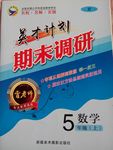题目内容
Many animals recognize their food because they see it. So do humans. When you see an apple or a piece of chocolate you know that these are things you can eat. You can also use other senses when you choose your food. You may like it because it smells good or because it tastes good. You may dislike some types of food because they do not look, smell or taste very nice. Different animals use different senses to find and choose their food. A few animals depend on only one of their senses, while most animals use more than one sense.
Although there are many different types of food, some animals spend their lives eating only one type. The giant panda eats only one particular type of bamboo. Other animals eat only one type of food even when given the choice. A kind of white butterfly will stay on the leaves of a cabbage, even though there are plenty of other vegetables in the garden. However, most animals have a more varied diet. The bear eats fruits and fish. The fox eats small animals, birds and fruits. The diet of these animals will be different depending on the season.
Humans have a very varied diet. We often eat food because we like it and not because it is good for us. In countries such as France and Britain, people eat foods with too much sugar. This makes them overweight, which is bad for their health. Eating too much red meat and animal products, such as butter, can also be bad for the health. Choosing the right food, therefore, has become an area of study in modern life.
1.We can infer from the text that humans and animals _________.
A. depend on one sense in choosing food
B. are not satisfied with their food
C. choose food in similar ways
D. eat entirely different food
2.Which of the following eats only one type of food?
A. The white butterfly. B. The small bird.
C. The bear. D. The fox.
3. Certain animals change their choice of food when ___________.
A. the season changes
B. the food color changes
C. they move to different places
D. they are attracted by different smells
4. We can learn from the last paragraph that __________.
A. food is chosen for a good reason
B. French and British food is good
C. some people have few choices of food
D. some people care little about healthy diet
1.C
2.A
3.A
4.D
【解析】
试题分析:本文介绍了动物和人选择食物的方法以及一些动物选择食物的偏向性。
1.C 推理判断题。根据文章第一行Many animals recognize their food because they see it. So do humans可知动物和人类在选择食物的时候,使用的方法可能是一致的,故C正确 。
2.A 细节理解题。根据第二段中A kind of white butterfly(蝴蝶) will stay on the leaves of a cabbage, even though there are plenty of other vegetables in the garden.可知蝴蝶一直留在卷心菜的叶子上,所以A正确 。
3.A 细节理解题。根据第二段最后一句The diet of these animals will be different depending on the season.说明有些动物的食谱可能会随着季节的变化而发生改变。故A正确。
4.
考点:考查科学知识类短文阅读

 名师点拨卷系列答案
名师点拨卷系列答案 英才计划期末调研系列答案
英才计划期末调研系列答案